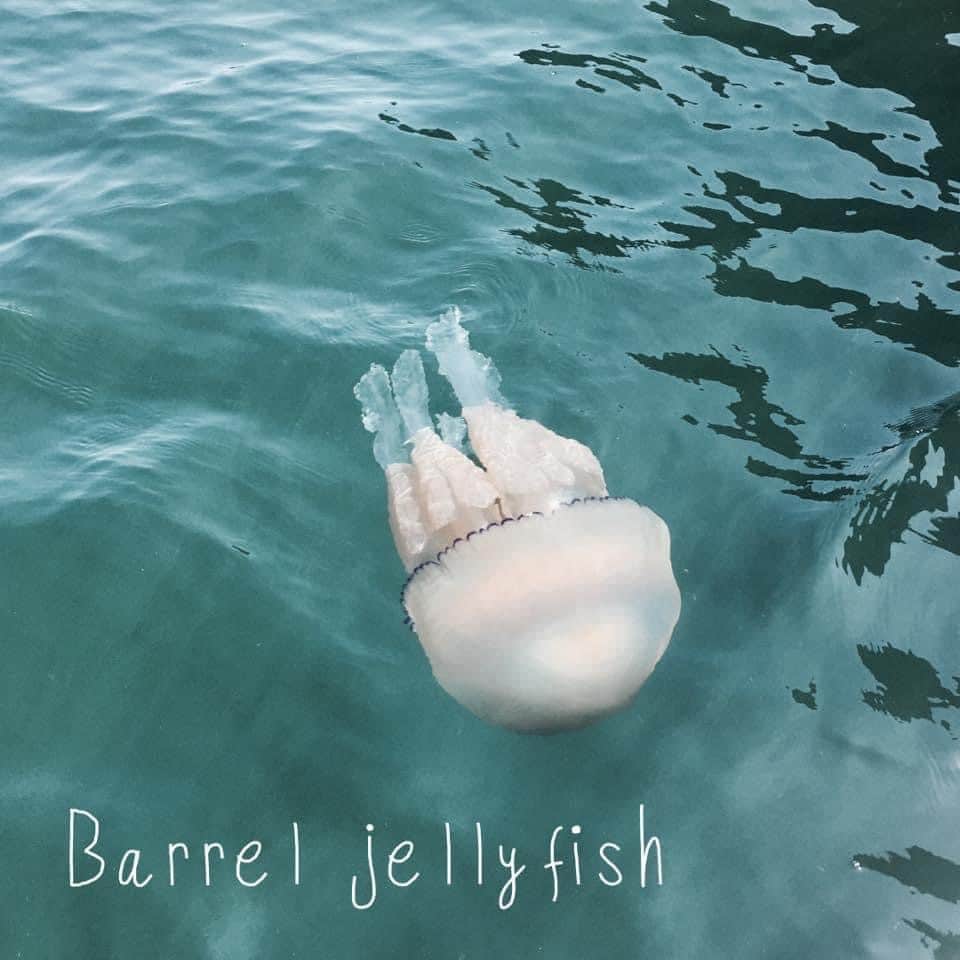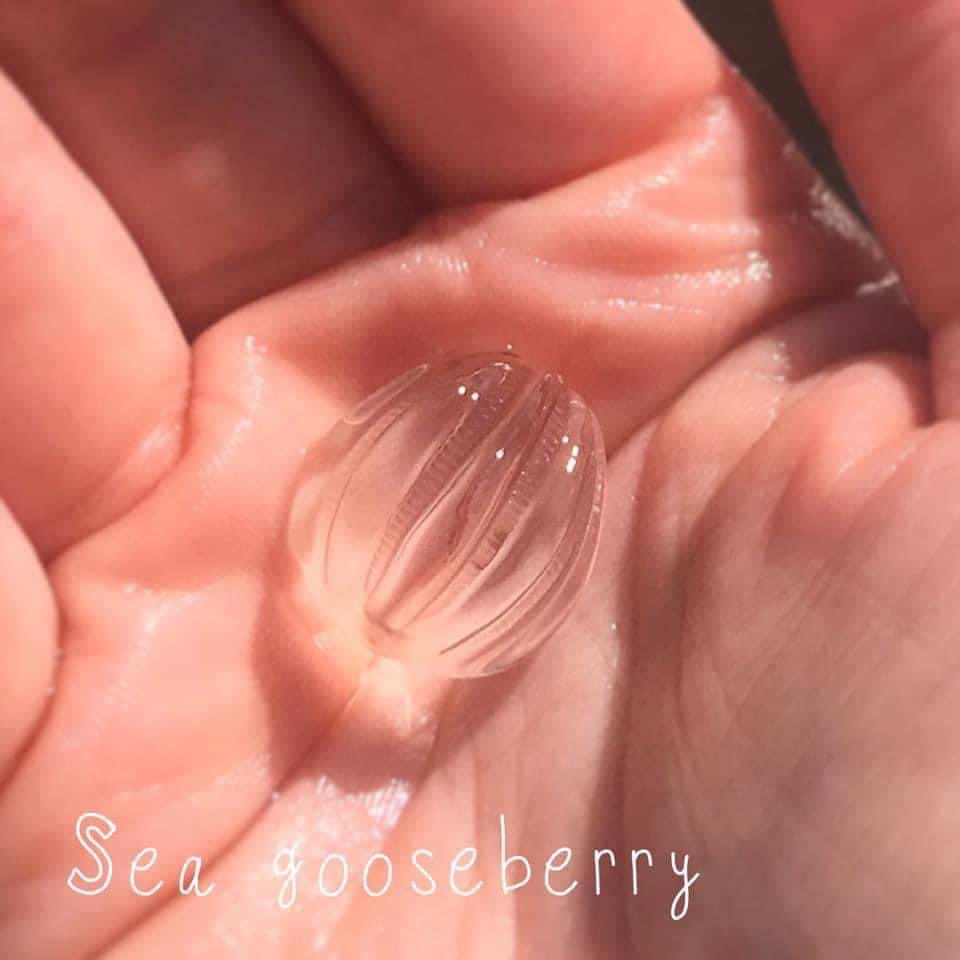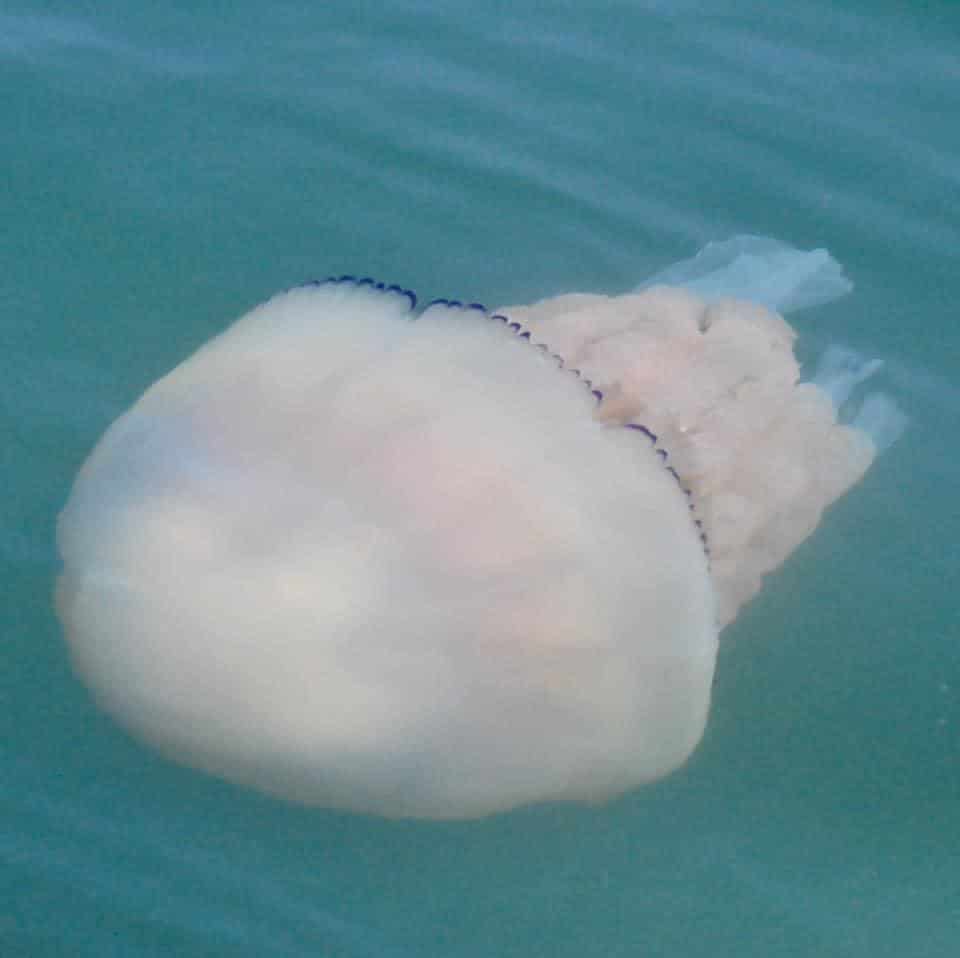It’s that time of year again when lots of these beasties turn up in our waters ☺️
But don’t freak out! A little bit of knowledge about the different types (and whether they sting or not!) can go a long way to helping everyone appreciate the beauty of these creatures
Jellyfish are mesmerising to watch pulsing through the water. They are 95% water, and have no brain, blood, or heart. They don’t have eyes but they can sense light
We encounter a variety of different species here, often seen on our trips. Some sting and some don’t, so if you can tell them apart there’s no need to be afraid of them
Here’s the run down…
???? Barrel jellyfish (Rhizostoma pulmo)
• By far the biggest (up to 1m across) and most common jellyfish we see around Gower
• They are harmless to humans, they do have a very mild sting but most people don’t even feel it
• They have 8 ‘arms’ which hang below the bell and generally have a bluish or beige tinge to them but can be a variety of colours

???? Moon jellyfish (Aurelia aurita)
• Another very common jellyfish here and also harmless
• Transparent with 4 pink circles on the top, up to 40cm across
• Occasionally they have more than 4 pink circles- we saw one with 9 once!
• Very mild sting which doesn’t affect humans

???? Blue jellyfish (Cyanea lamarckii)
• Deep purple in colour, long tentacles
• Generally smaller, up to 30cm across
• Much less common than barrel and moon jellyfish here, but still frequently seen
• This one stings! Apparently the sting is slightly worse than a nettle sting

???? Compass jellyfish (Chrysaora hysoscella)
• Distinctive brown radial pattern on the bell which resembles a compass
• Up to 30cm across, long tentacles
• Less common here than blue jellyfish
• This one stings!

???? Sea gooseberry (Pleurobrachia pileus)
• Not actually a jellyfish, but a comb jelly
• Only a few centimetres in diameter
• Doesn’t sting
• Hard to spot as they are transparent, but have pretty iridescent lines of hairs along their bodies

???? Portuguese man o’war (Physalia physalis)
• Not actually a jellyfish and not commonly encountered here (although many washed up here on Gower a few years ago in the autumn)
• A ‘siphonophore’ – a type of animal that is made up of a colony of organisms working together
• Blue/purple/pink colour, with air-filled bag which floats on the surface, very long tentacles
• Only occasionally reported in UK waters
• Very painful sting which in rare cases can be fatal

Report your jellyfish sightings to the Marine Conservation Society at www.mcsuk.org
For treatment of jellyfish stings (don’t pee on it, that’s a myth!) find NHS advice at https://www.nhs.uk/conditions/jellyfish-and-other-sea-creature-stings/
PLEASE SUPPORT US FOR JUST £2 A MONTH












